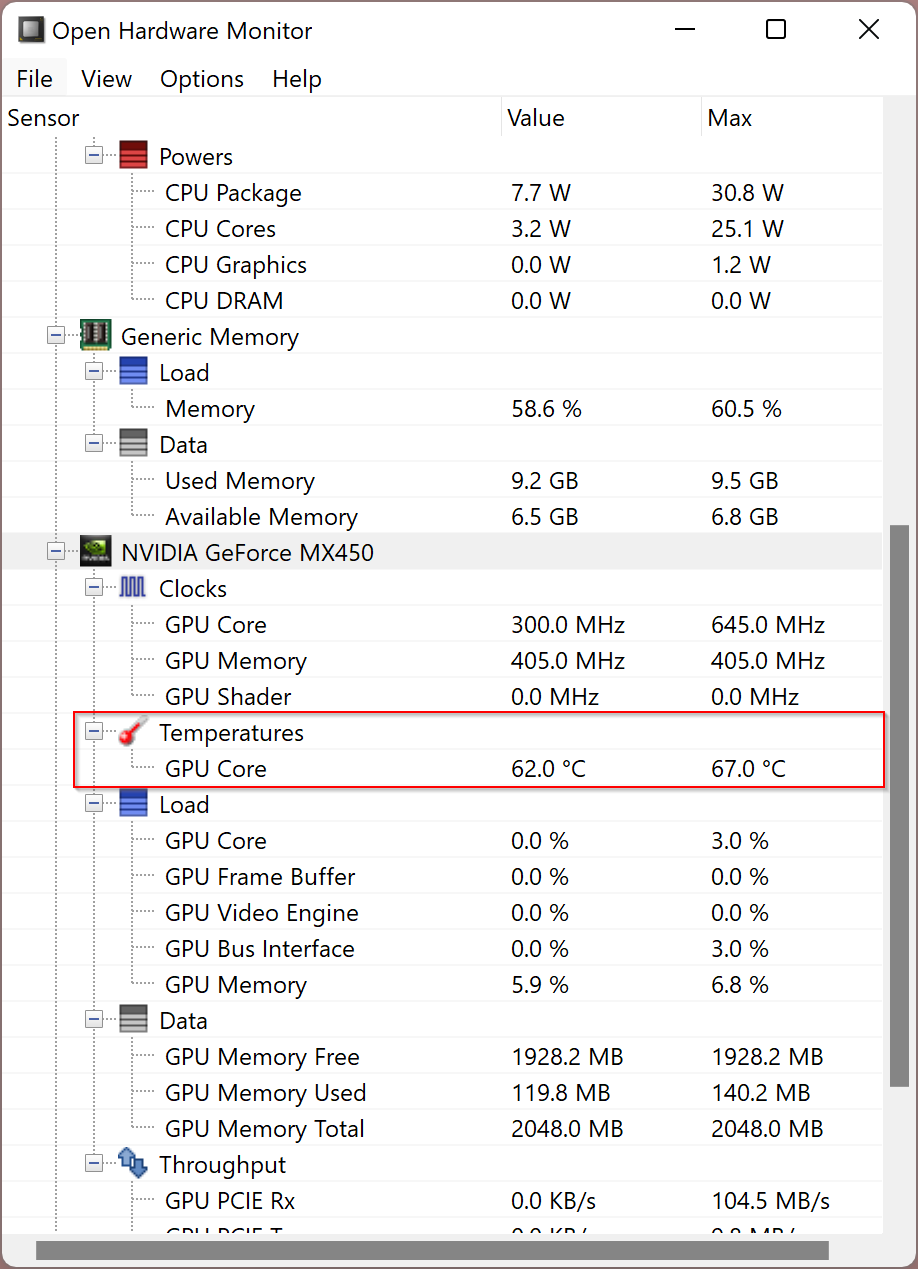Open Hardware Monitor is a free and open-source hardware monitoring tool for Windows and Linux that provides real-time information about your computer’s hardware. It is designed to monitor the temperature, voltage, fan speed, clock speed, and utilization of the CPU, GPU, and other hardware components. In this guide, we will cover everything you need to know about Open Hardware Monitor, from its features and benefits to how to use it effectively.

Features of Open Hardware Monitor
Open Hardware Monitor is a comprehensive tool that provides users with a wide range of features to monitor their computer’s hardware. Here are some of the main features of Open Hardware Monitor:-
- Real-time monitoring of hardware components: Open Hardware Monitor provides real-time monitoring of various hardware components, including CPU temperature, fan speed, clock speed, and voltage.
- Customizable interface: The interface of Open Hardware Monitor can be customized according to your preferences. You can choose which components to monitor, and you can also customize the colors and font size of the interface.
- Support for multiple hardware sensors: Open Hardware Monitor supports a wide range of hardware sensors, including those found on CPUs, GPUs, and hard drives.
- Portable: Open Hardware Monitor is a portable tool that does not require installation. You can simply download it and run it from a USB drive or other external storage device.
- Log files: Open Hardware Monitor allows you to save log files of your hardware monitoring data. This can be useful for troubleshooting hardware issues or for monitoring the performance of your computer over time.
- Compatibility: Open Hardware Monitor is compatible with a wide range of hardware, including Intel and AMD processors, Nvidia and ATI graphics cards, and many more.
Benefits of Open Hardware Monitor
There are many benefits to using Open Hardware Monitor to monitor your computer’s hardware. Here are some of the main benefits:-
- Prevent overheating: By monitoring the temperature of your CPU and other hardware components, you can prevent overheating and avoid damage to your hardware.
- Troubleshoot hardware issues: If you are experiencing hardware issues, Open Hardware Monitor can help you identify the problem. By monitoring the voltage, fan speed, and other parameters, you can pinpoint the source of the issue and take steps to resolve it.
- Optimize performance: By monitoring your hardware utilization, you can identify bottlenecks and optimize the performance of your computer.
- Customizable interface: Open Hardware Monitor allows you to customize the interface to suit your preferences. You can choose which components to monitor and adjust the colors and font size of the interface.
How to Use Open Hardware Monitor?
Using Open Hardware Monitor is easy. Here’s a step-by-step guide:-
Step 1. First, download and extract the zip file’s contents to a folder on your computer.
Step 2. Open Hardware Monitor does not require installation, so that you can run it directly from the folder. To start Open Hardware Monitor, double-click the “OpenHardwareMonitor.exe” file in the folder where you extracted the contents of the zip file.
Step 3. Once Open Hardware Monitor is running, you will see a list of the hardware components that it is monitoring. You can customize this list by clicking the “Configure” button in the toolbar.
To monitor the temperature, voltage, fan speed, and other parameters of a particular hardware component, simply click on it in the list. You will then see a real-time graph of the component’s parameters.
You can save log files of your monitoring data by clicking the “Log” button in the toolbar. You can also customize the interface by clicking the “Layout” button in the toolbar, which allows you to add or remove individual components from the display.
In addition to monitoring your system’s hardware, Open Hardware Monitor also provides some basic system information, such as your processor and memory type and usage, operating system version, and BIOS information. You can access this information by clicking the “Computer” tab in the main window.
Download Open Hardware Monitor
You can download Open Hardware Monitor from its official website.
Conclusion
Overall, Open Hardware Monitor is a powerful and flexible tool for monitoring your system’s hardware and identifying potential issues. Its customizable interface and support for a wide range of sensors make it a great choice for advanced users, while its intuitive layout and user-friendly features make it accessible to beginners as well. If you’re looking for a comprehensive hardware monitoring solution, Open Hardware Monitor is definitely worth a try.
